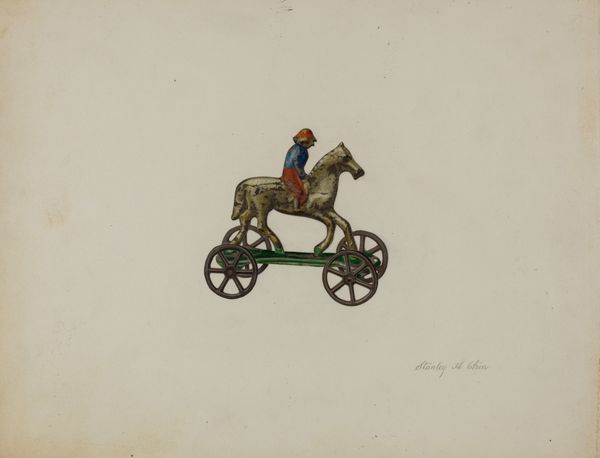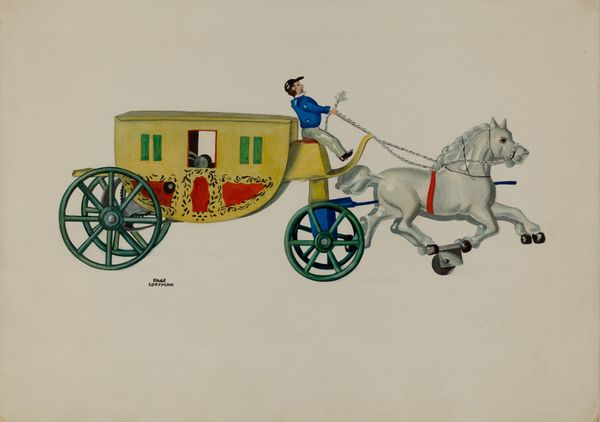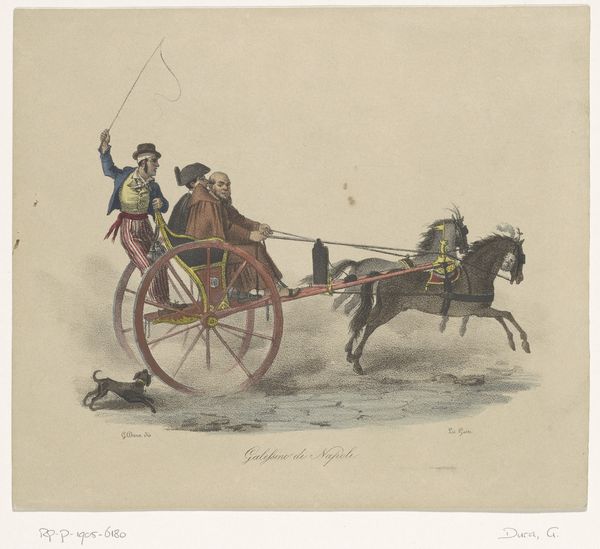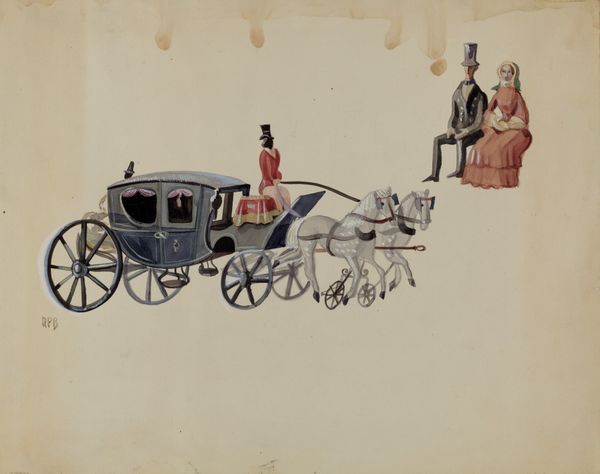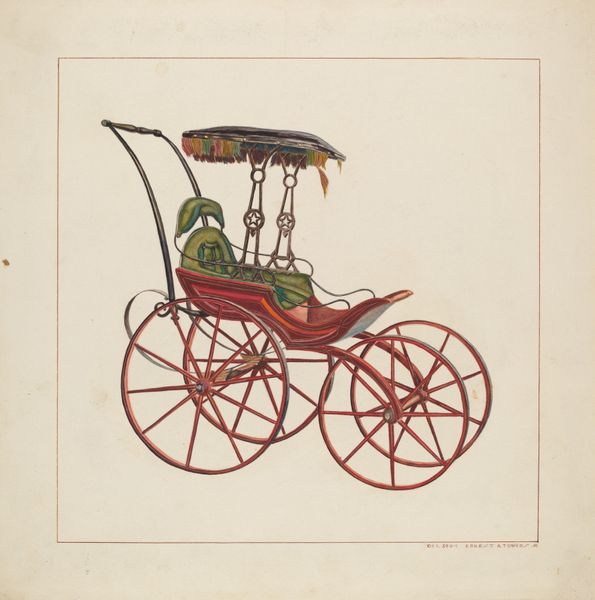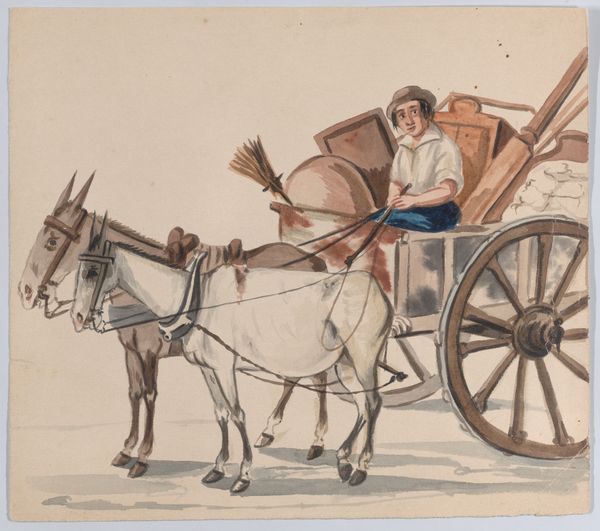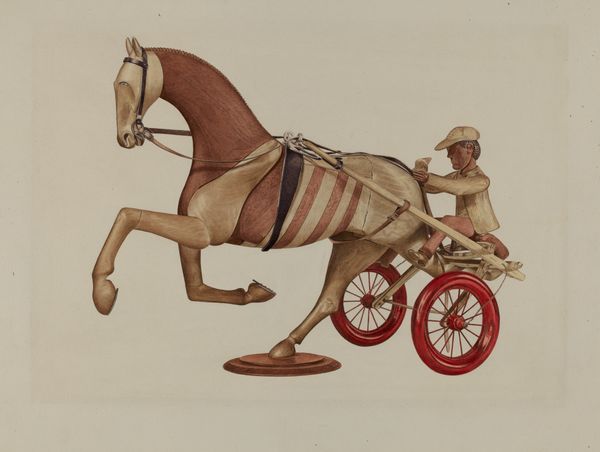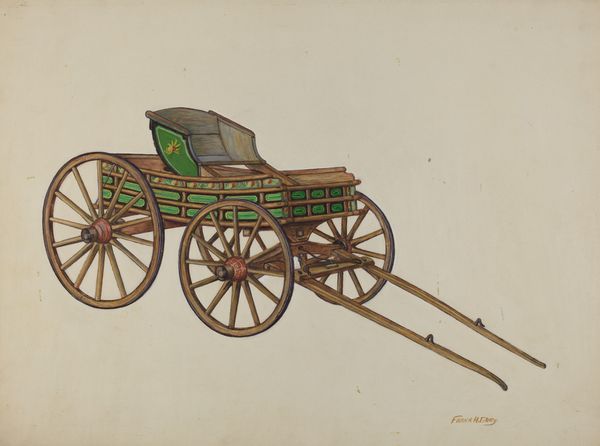
drawing, coloured-pencil
#
drawing
#
coloured-pencil
#
coloured pencil
#
watercolor
Dimensions: overall: 35.8 x 45.8 cm (14 1/8 x 18 1/16 in.) Original IAD Object: 11 1/2" long; 4 1/2" high; 4" deep
Copyright: National Gallery of Art: CC0 1.0
Curator: This watercolor and colored pencil drawing, simply titled "Toy Fire Engine", was created between 1935 and 1942 by William Spiecker. Editor: It's delightful. A little melancholic too, if I’m honest. It's a rendering of a child's toy, yet somehow it feels weighty. Curator: Consider the materials Spiecker employed – colored pencil and watercolor. It appears he selected readily available, affordable media to meticulously represent a manufactured object. Editor: Precisely! Notice the horses in mid-gallop, almost mythic in their painted energy. It speaks to a kind of heroic ideal, the volunteer fire brigade rushing to save the day! Fire as a symbol, historically…it purifies, but also devastates. Curator: Good point. Also, the materiality of the toy itself – likely made of cast iron, mass-produced. The image gives us clues to production practices, but is set against this…nostalgic vision you describe. Editor: And note how he captured the toy's textures. The shiny metal, rendered carefully using layered pigments, gives the whole a feeling of realism—yet it also evokes a yearning, perhaps for a simpler time. The bright reds serve as an almost violent accent amid otherwise muted, serious hues. Curator: That stark contrast mirrors economic disparity of the Depression era—a manufactured playtime ideal rendered against a backdrop of societal strain. Did this toy represent, or even alleviate, some sort of anxiety, do you think? Editor: Toys are powerful tools; their small scale is in dramatic opposition to the massive import of cultural beliefs and practices that they embody, from patriotism to domestic roles. But beyond the obvious, consider the psychological draw of containing such fearsome potency – as symbolized here through the fire. Curator: This dialogue highlights the relationship between childhood aspirations and industrial output. And also the quiet elegance and social complexities held within seemingly simple consumer objects. Editor: Indeed. The image makes you contemplate more than just what appears at first glance—a child's toy. It reminds you that, at its heart, art can embody collective dreams, and our fears.
Comments
No comments
Be the first to comment and join the conversation on the ultimate creative platform.

